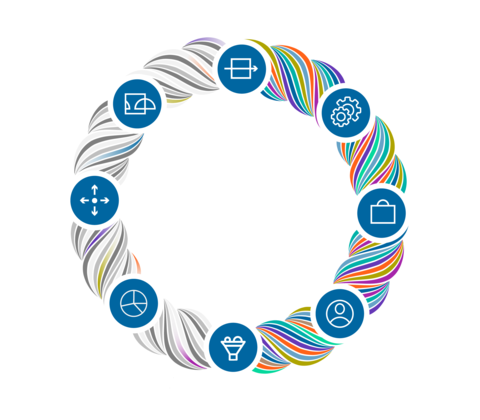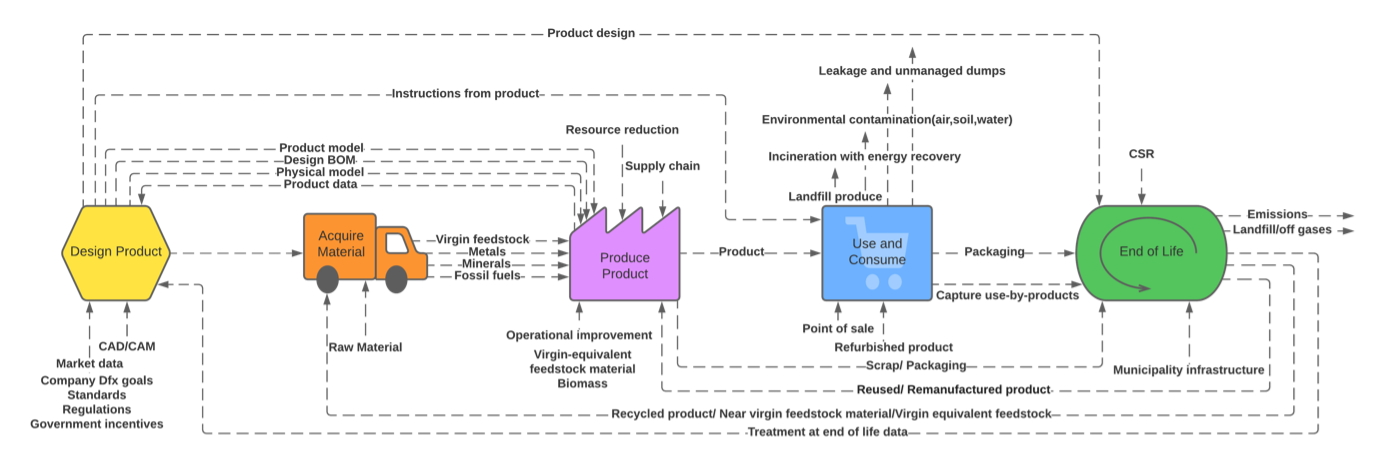Manufacturing in a Circular Economy

New: Reference models for manufacturing in a circular economy
View and download the reference model to track activities and systems involved in a product’s life cycle within a circular economy.
Under a circular economy, materials are not discarded after they are used but rather brought back into the economy through a variety of means. This vision is challenging manufacturers to rethink how they design, produce, and ship products away from the old way of the linear economy (take, make, waste) to a more regenerative process. Consumers want products that are produced more efficiently. Industries are responding by finding ways to better and more effectively use resources. This comes in the form of products made from recovered materials, less packaging, and design and manufacturing practices optimized to reduce energy use and waste.
The current trend towards more and better data to improve manufacturing presents an opportunity to create manufacturing systems that are optimized to be less resource intensive, have less impact on the environment, and more flexible to adjust to changing designs and material streams. New standards and business models are needed to help industry achieve their circular economy goals, demonstrate their results, and measure progress. The experts in manufacturing and data systems at NIST's Systems Integration Division (SID) work alongside industry and with standards organizations (specifically ASTM International and ISO) to address foundational research and specific standards needed to consistently measure progress and show results.
This project is part of NIST's Circular Economy program, which supports the nation’s need to transition away from a model in which materials are extracted from the environment, manufactured into products, used, then discarded (a so called “linear economy”) toward one in which the atoms and molecules that make up those products repeatedly cycle within the economy and retain their value.
The figure below is a draft standards roadmap that shows information flows at different stages of a life cycle and standards that relate to each life cycle stage, plus a list of relevant standards that are published (color coded in relation to each life cycle) and under development (red star) as of August, 2022. The group's 2023 workshop report on standards needs to support manufacturing in a circular economy is also available.

Credit: Maya Reslan

Contacts
-
(301) 975-8286
-
(301) 975-3508
-
(301) 975-8583

